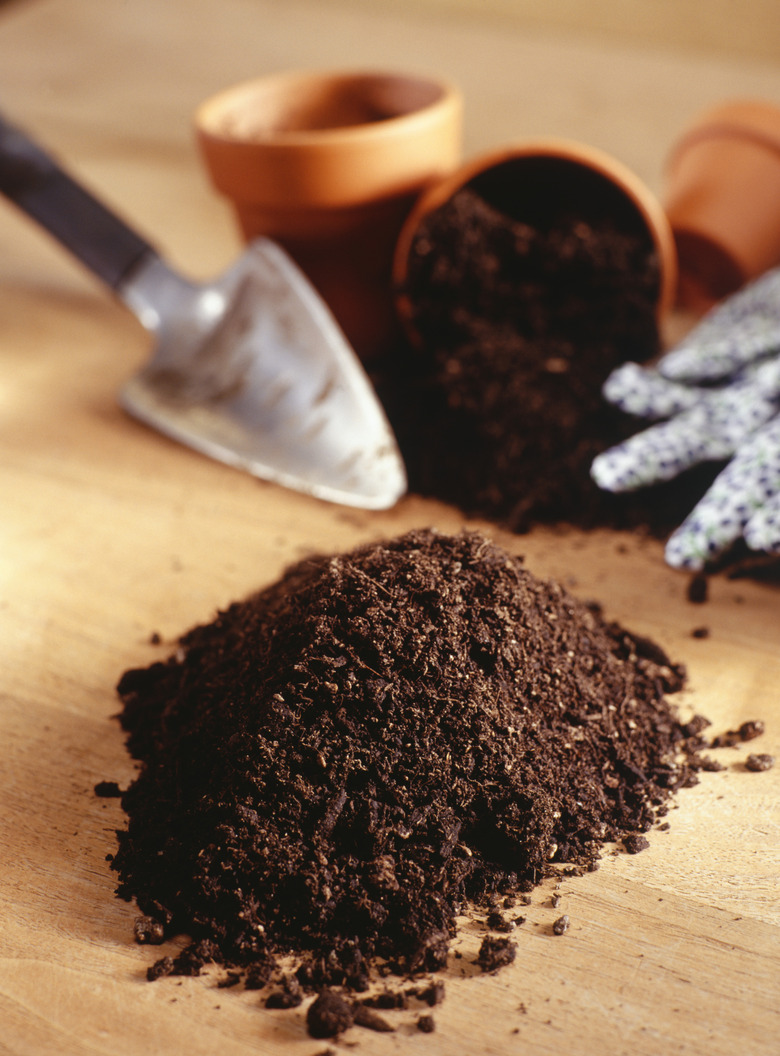How To Transplant Pothos
Pothos (Epipremnum aureum) grow houseplants everywhere but also grow as outdoor vines or ground covers in U.S. Department of Agriculture plant hardiness zones 10 through 11. Houseplant pothos need to be transplanted or repotted in spring when they are using more water than usual, growing slowly and their roots can be seen at the bottom of the container. Outdoor pothos can be transplanted to a new spot from late winter to early spring
Pothos Houseplants
Step 1
Step 1
Wash the new pot with hot, soapy water and rinse it if it has been used for another plant. Mix 1 teaspoon of bleach into 1 gallon of water and pour it over the container to sterilize it. Rinse the bleach solution off of the container. Use a container with drain holes in the bottom that is one size larger than the old one or no more than 2 inches wider.
- Pothos (Epipremnum aureum) grow houseplants everywhere but also grow as outdoor vines or ground covers in U.S. Department of Agriculture plant hardiness zones 10 through 11.
- Outdoor pothos can be transplanted to a new spot from late winter to early spring Wash the new pot with hot, soapy water and rinse it if it has been used for another plant.
Step 2
Step 2
Moisten a peat-based potting mix that contains perlite and course builder's sand with water. Pour 1 to 2 inches of the moist potting mix into the bottom of the new container. Do not use potting mix that contains soil.
Step 3
Step 3
Squeeze the pothos' current container, if possible, to loosen the soil and roots. Loosen the soil and roots in clay or ceramic containers by digging your fingers down into the soil around the edges. Tip the pot sideways and gently grasp the pothos at the base of the stems. Pull the plant out of the old container. Loosen the roots carefully by hand.
- Moisten a peat-based potting mix that contains perlite and course builder's sand with water.
- Loosen the soil and roots in clay or ceramic containers by digging your fingers down into the soil around the edges.
Step 4
Step 4
Place the pothos plant in the new container. Fill in around the roots with moistened potting mix. Fill the container to within 1 inch of the top. Water the newly planted pothos generously until water drains from the bottom.
Pothos Outdoors
Step 1
Step 1
Water the pothos generously one day before transplanting. Remove the stems from support structures. Use sharp scissors or pruners to trim off lengths of stems that cannot be easily removed from their support. Trim all of the stems back to a length of 6 to 12 inches, if you wish, to make the plant easier to move.
- Place the pothos plant in the new container.
Step 2
Step 2
Dig a hole in the new planting hole at least twice the width of the pothos root structure. Dig it just deep enough to plant the pothos at the same depth it was growing before transplanting. Space the plant 2 to 3 feet away from other pothos, plants or structures. Choose a shady spot away from shrubs and trees.
Step 3
Step 3
Push a shovel straight down into the soil 6 inches away from the pothos. Repeat this all the way around the plant, forming a circle around the plant. Hold the stems up or move them aside to prevent injury. Push the shovel into the soil again and pull the shovel handle back to lift the pothos up out of the soil with the tip of the shovel.
- Dig a hole in the new planting hole at least twice the width of the pothos root structure.
- Push a shovel straight down into the soil 6 inches away from the pothos.
Step 4
Step 4
Pick the pothos up at the base of the plant. Support the bottom of the root ball with one hand and gently hold the base of the stems with the other. Place it in the new planting hole. Fill in around the roots with the same soil that was removed from the hole. Water the plant generously to settle the soil around the roots. Spread a 1- to 2-inch layer of organic mulch around the pothos.
Warning
Pothos leaves, stems and roots are toxic to humans and animals if eaten.
Things Needed
- Tape measure
- Container
- Soap
- Bleach
- 1-gallon container
- Peat-based potting mix
- Sharp scissors (optional)
- Sharp pruners (optional)
- Shovel
- Mulch
References
- Missouri Botanical Garden: Epipremnum Aureum
- UW-Extension Cooperative Extension: Pothos
- University of Florida IFAS Extension: Vines
- University of Illinois Extension: Pruning House Plants
- The University of Georgia College of Agricultural & Environmental Sciences: Growing Indoor Plants With Success
- Clemson Cooperative Extension: Dividing Perennials
- Clemson Cooperative Extension: Growing Perennials
